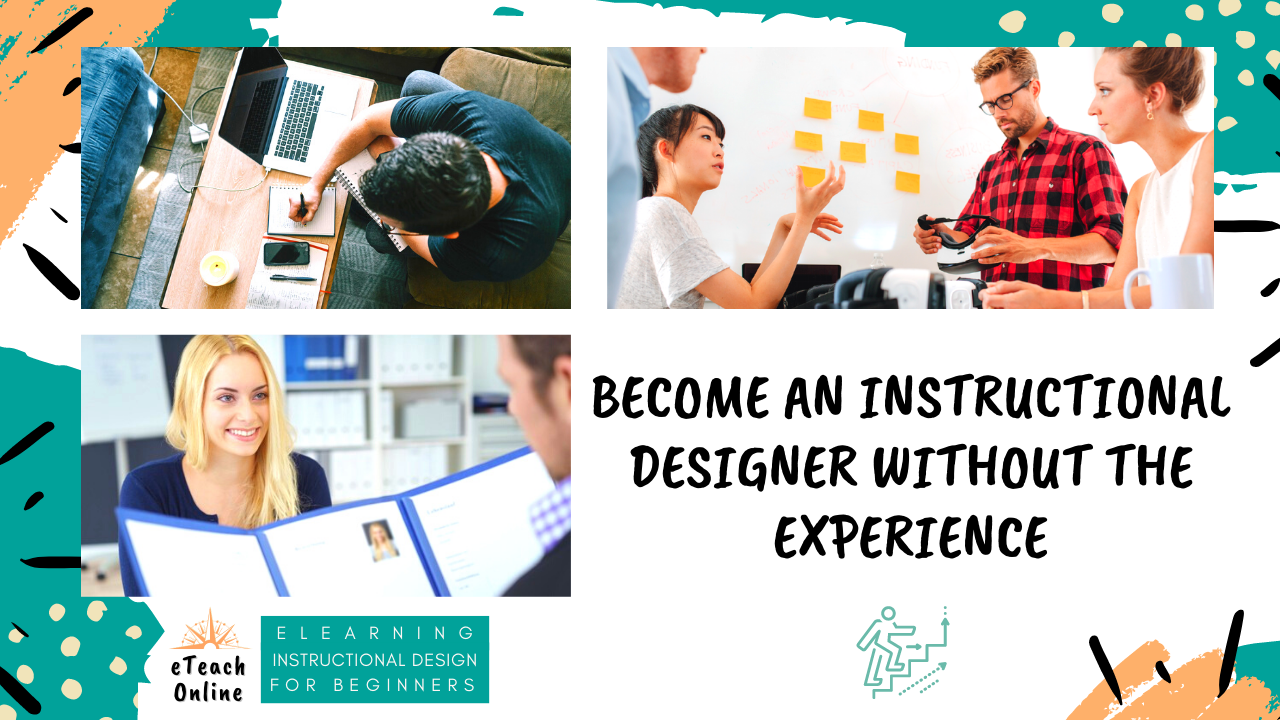
So, are you wondering how to get experience in instructional design and become an instructional designer. How exciting!
Instructional design is a rewarding and satisfying career, not to mention the ever-growing need for qualified instructional designers in this digital age.
Although it can be expensive and time-consuming, attending a university is an obvious way to get the experience you need in instructional design. However, there are other options.
You don't HAVE to get a formal education to become successful in instructional design...
What is an Instructional Designer?
You've heard the term "instructional designer," but you might still be wondering exactly what an instructional designer does.
Instructional designers create effective, engaging learning experiences.
While trainers or instructors deliver instruction to a live audience, instructional designers work behind the scenes.
Instructional designers collaborate with subject matter experts (SMEs) to design and often develop the learning experience, but they rarely deliver it to a live audience themselves.
To learn more about what an instructional designer does, check out the blog post, Instructional Designer Roles and Responsibilities.
How to Get Instructional Design Experience Without the Experience
While your portfolio will help you the most with landing paid work, many employers and potential clients want to see that you've successfully pulled off real-world projects for other people.
I'm going to discuss with you 4 ways to get the experience you need in order to become a successful instructional designer...
1. Volunteer at Work

You may find ample opportunity to gain instructional design experience through volunteering to take on a project for your own workplace or organization.
You can inform your supervisor of your goal, and you can inquire about potential projects that you could help with. Organizations often recognize the value in developing their people, so if you've developed a skillset to help them do so, then they stand to benefit from that.
In addition, the ability to not only create effective eLearning courses, but then to successfully implement the materials and demonstrate its value, illustrates your ability to develop learning experiences that have a positive impact.
Real-world implementation of your work is, therefore, a key way to gain instructional design experience that gives you the opportunity to develop your skills and also helps you stand out among competition when applying for jobs.
2. Consulting

Instructional design freelance work can be found very easily, as many organizations may need assistance with one-time help in creating learning experiences that don’t always justify hiring a full-time employee.
The demand for instructional designers is through the roof because so many institutions are expanding their online offerings, from K-12 and higher education coursework to corporate training.
Working as a consultant on individual projects can be an excellent way to gain more experience and create high-quality examples for your portfolio.
By identifying organizations in transition and showing how you can help them create robust eLearning content, you can engage in a wide range of instructional design experiences that will expand your skillset and portfolio.
3. Volunteer at Nonprofits

Another option is to reach out to local nonprofits to see if they could use the help of an instructional designer. This is a great way to gain experience and help a cause that you believe in at the same time.
4. Networking

In a field dedicated to making learning effective and accessible for all, there’s no shortage of new ideas, resources, experiences, and mentors.
That’s why I recommend constant networking as a way to gain additional experience and add unique strategies to your toolkit. Soliciting feedback on your work can be an easy first step.
In the eLearning & Instructional Design for Beginners Community forums, you’re not only learning and getting feedback from an expert in the field, but you’re also learning how to look for quality in each others’ work.
Giving feedback to someone else also helps you consider what you’re doing well, and areas where you can improve your own work.
Networking and peer feedback enable you to think strategically and identify experiences that will help you further develop the skills you need most.
Networking is also a way to collect new resources, many of which are free and available online. I recommend choosing those that are peer-reviewed and backed by learning science to ensure their quality.
Learn Design in the eLearning & Instructional Design for Beginners Community
Members of the eLearning and Instructional Design for Beginners Community constantly engage in design experience.
The trainings in the community guide you through the completion of an instructional design project and along the way, members gather and reflect on the work you create in for your portfolio.
Create a polished online portfolio that is a professional, public-facing site designed to explain and showcase your work experiences for potential employers.
If you’re interested in advancing in this rapidly growing field, learn how the eLearning and Instructional Design for Beginners Community can help.
JOIN THE
eLearning and Instructional Design for Beginners Community
- In-depth courses & training
Access my rapidly growing library, attend monthly live training & accountability support groups
- Exclusive tools & members-only discounts
Tools, templates, downloads, checklists and more - plus receive special perks & discounts
- Supportive community & network
Feedback and support from fellow instructional designers, career-driven business owners, and experts who will keep you on track
Get Your Software Toolkit for Instructional Designers
Tools & processes that will help you plan, build, and grow your instructional design career and freelance business.



